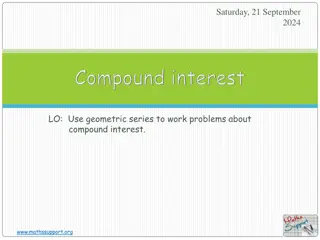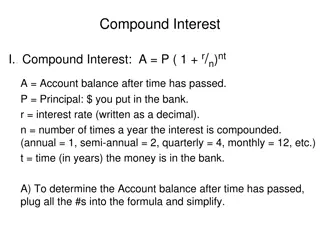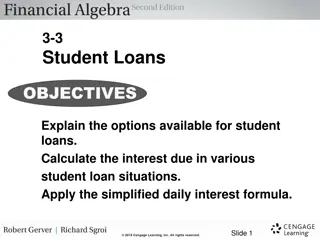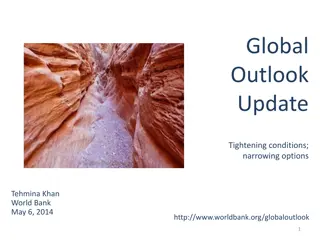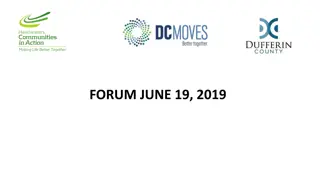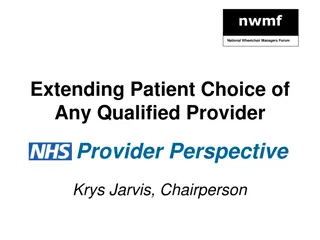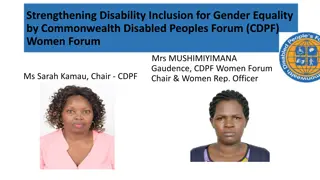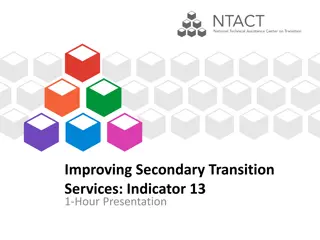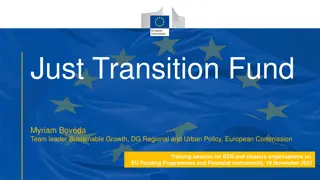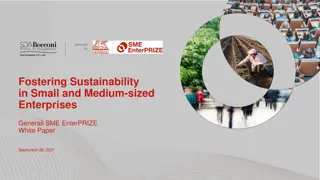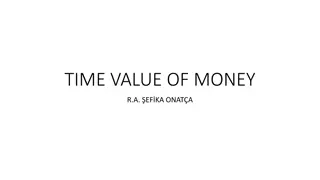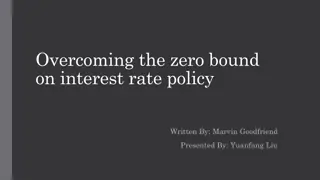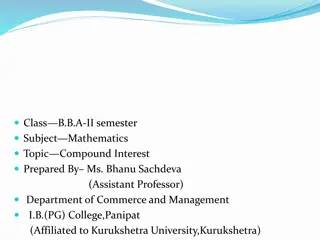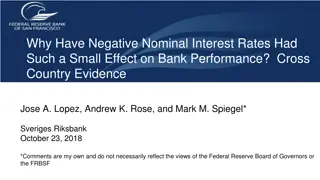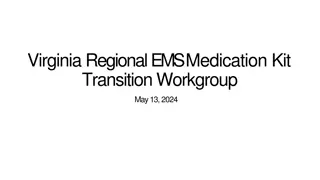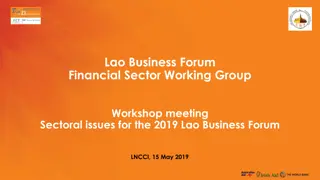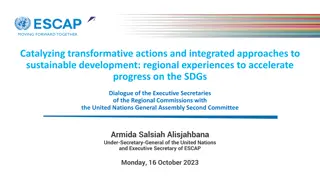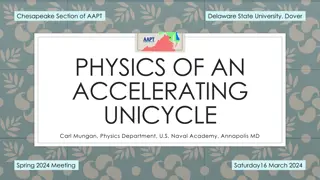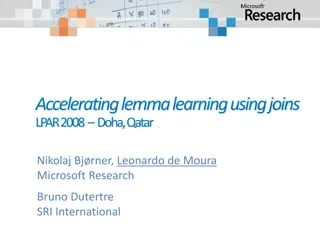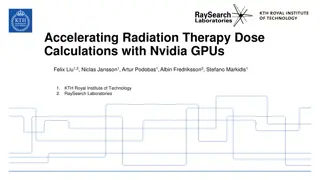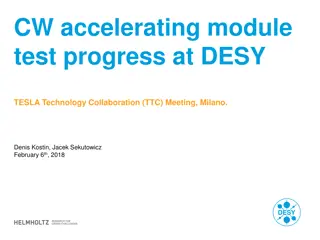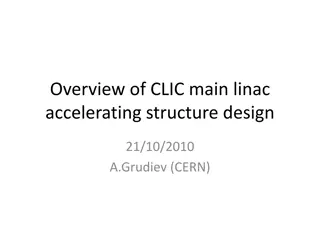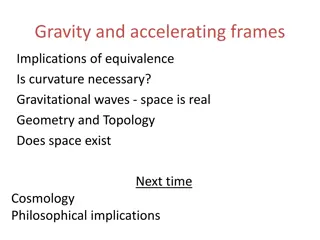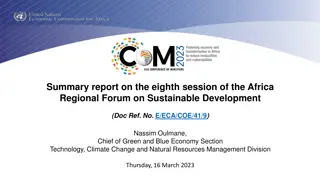Accelerating VR Industry Growth: Transition from VR Interest Group to VR Industry Forum
The VR Interest Group is transitioning into the VR Industry Forum to boost the growth of the VR industry by facilitating collaboration, setting standards, and accelerating adoption. With a focus on removing hurdles and benefiting both industry stakeholders and consumers, the formal organization aims to provide a structured platform for technical advancements and resource allocation. The VR Industry Forum is set to launch at CES 2017, marking a significant step towards establishing a robust VR ecosystem.
Download Presentation

Please find below an Image/Link to download the presentation.
The content on the website is provided AS IS for your information and personal use only. It may not be sold, licensed, or shared on other websites without obtaining consent from the author. Download presentation by click this link. If you encounter any issues during the download, it is possible that the publisher has removed the file from their server.
E N D
Presentation Transcript
VR Interest Group >>> VR Industry Forum 17thOctober 2017 ITU : Geneva David Price
VR Interest Group Members of the Interest Group share: A common background in the TV and Media space A desire to avoid market fragmentation through cross industry collaboration A desire to accelerate the widespread consumption of immersive VR content A desire to foster and advocate standards based solutions liaising with SDOs : MPEG, SMPTE, 3GPP, DVB A desire to include future big VR platforms : Facebook, Google, . A desire to liaise with already established VR Forums : VR Society, ITA3D What we ALL want to avoid going from this . to this . For iPhone there are already 28 VR headsets 13 Cardboard headsets
What we ALL want to avoid going from this . to this . For iPhone there are already 28 VR headsets 13 Cardboard headsets
VR Interest Group - Status Email reflector (VR360@dtg.org.uk) over 176 individuals from 74 organisations Website with meeting information, previous minutes and working documents (https://vrinterestgroup.org) Scope document in Google Docs Meetings at CES, NAB and IBC Bi-weekly conference calls
VR Industry Forum A derivative from the VR Interest Group 27 Founding Organizations have agreed to move forward to establish an Industry Forum (studios, operators, technology vendors, academia ) Inaugural Founders Conference Call this week VR Industry Forum Bylaws and IPR Policy have been drafted Preliminary plan is to launch at CES 2017 VR Interest Group may continue as a reflector but as: a review body for WG output A distribution for studies and white papers
Why move from VRIG to VRIF We all believe that VR will thrive, but that we can accelerate the adoption by removing hurdles. Our goal is to bootstrap an industry that will allow all of us, and consumers, to benefit. Having a formal organization will provide a context to make this happen more efficiently
A Formal Organization Provides a structure to conduct technical and communication activities Makes it easier companies and other organizations to participate and allocate resources Provides a context for dealing with IP Provides context that respects competition law Allows us to fund relevant activities Host meetings, interop activities, professional communication and advocacy, liaisons, with a professional infrastructure to support the work Allows us to command industry-wide recognition and credibility
VR work areas Work Packages General Guidelines on . Potential SDO related Initial work in establishing the Lexicon DPP have done some work in this area Note 0 Overall structure of guidelines including scope and intent 1 Story Telling How to write VR content Directing the viewer Freedom of viewing choice Standards based structure to story branching Need buy in from studios to include this section. Allowing viewer selectable scene position has a dramatic effect on content production, capture and encode. Could be part of VR Society 2 Production how to produce content: camera, 2D/3D , file formats, frame rates, interfaces, storage, archive SMPTE Virtual Reality Society (part of AIS) 3 Merged GraphicsVideo and graphics merging using various techniques like overlay, 3D mapping, .. VR experiences will include interactive elements rendered in real time and there is a need to harmonize dealing with those across platforms. Need to have a broader scope than pure video with standard graphics 4 Content Mapping Stitching and geometry mapping eye/iris tracking Could be part of MPEG (OMAF, Video), JVET, and/or 3GPP, IETF MPEG (OMAF, Video, LightField exploration), JCT, VC, JVET, SCTE, ETSI Fove, Eye Tribe, SensoMotoric, Tobii and others all working on proprietary iris tracking solutions 5 Compression Tiling, windowing, codec Efficient use of bits for the highest user experience, especially for magic window or iris tracking content 6 Storage File format encapsulation and metadata signaling MPEG (File Formats, OMAF) Metadata signalling (e.g., VR content indication, info needed for decoding, rendering and their optimizations), storage format 7 Distribution Broadcast, unicast, LTE Broadcast, CDN caching, low delay by design DVB, CableLabs, MPEG (DASH), DASH, IF, SCTE, ETSI Metadata signaling (e.g., VR content indication, info needed for content selection, transmission, adaptation, consumption), distribution format
VR work areas Work Packages Decoder and Display Guidelines on . Potential SDO related Note 8 Rendering techniques: external (PC, game station) vs internal (built in Mobile) Resolution/frame rate for display device API for all devices interactions especially between HMD, hand/foot sensors and external signaling such as walls and objects Rendering, navigation Impact on the human balance, sensing vestibular system from experiencing VR where motion is seen but not sensed 9 API Facebook, Google (Daydream) , Apple (to come) , Unity 10 11 UI / navigation Motion sickness Vertigo, Audience ratings Spatial audio W3C BBFC have some work MPAA (potentially) Studios already considering a rating system to provide user warnings 12 Spatial audio capture: microphone arrays, workflows, file formats for storage and transmission, encoding. Spatial audio rendering: proper head tracking and sound field rotation, sound source localization, latency constraints, ambisonics, audio objects and metadata to control them. Encryption including CENC support; Support for transformations in secure media path in players and devices; Verification of source and integrity of content MPEG (Audio), 3GPP IETF, ETSI 13 Security W3C (CENC, EME etc.), EBU, SCTE Need to ensure any transformations, packaging etc. for VR and AR is supported in HW and SW for secure content, both server side an on the devices. Starting with the DECE glossary 14 Taxonomy Creation of a lexicon and glossary for use by the other WGs and industry at large Specific needs of broadcasters and OTT service providers for commercial success DECE 15 Requirements of Service Providers EBU, NAB, ABU, ACT, NABA
WG 1: Comprehensive Lexicon Fantastic starting point provided by DECE! 6 weekly calls to date Moving to editing work First draft released to VRIG Members for review 240 terms in a spreadsheet (v9) Getting as reasonably exhaustive as possible Will have to be maintained, periodically iterated/versioned over time
Lexicon Organization Term: Word or phrase Category: Classification of the term Acronym: Abbrevated form of the term Definition: Meaning and use of the term Core: Applicability of the term to standards work. Workflow: Categorization of the phase(s) of ecosystem workflow the term is most relevant to. SDO Ref: Relevant standards-developing organizations or industry bodies
WG 1: Lexicon Categories Artifact Audio Camera Display Interaction Metric Organization Person Physiology Product Sensor Software Technology Other
WG 1: Lexicon Workflow Capture Includes sensors, real-time stitching Produce Includes data conversion, post-production, stitching, point clouds, 3D mapping, planar projection, and QC Encode Includes transcoding, multiplexing, DRM license generation, encryption Distribute Includes storage, CDN, streaming, download, broadcast Decode Includes DRM license verification and decryption Render display Includes HMD, light-field display Interact Includes user input, latency Experience Includes physiology, user acceptance
VR Interest Group >>> VR Industry Forum 17thOctober 2017 ITU : Geneva David Price





